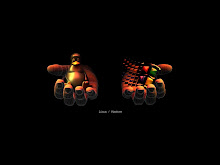Wi-Fi and Bluetooth are designed to coexist in the network, and although
they certainly have overlapping applications, each has its distinct zones
of advantage.
The biggest differences between Wi-Fi and Bluetooth are
Distance: Bluetooth is lower powered, which means that its signal can
go only short distances (up to 10 meters, or a bit more than 30 feet).
802.11 technologies can cover your home, and in some cases more,
depending on the antenna you use. Some Bluetooth devices operate
under a high-powered scheme (called Class 1 Bluetooth devices), which
can reach up to 100 meters. Most home Bluetooth devices don’t have
this kind of range, mainly because they’re designed to be battery powered,
and the shorter Class 2 range of 10 meters provides a better tradeoff
between battery life and range.
Speed: The latest versions of Wi-Fi can carry data at rates in the hundreds
of megabits per second; the fastest existing Bluetooth implementations
have a maximum data rate of 3 Mbps. So think of Wi-Fi as a networking
technology that can handle high-speed transfers of the biggest files, and
Bluetooth as something designed for lower speed connections (such as
carrying voice or audio signals) or for the transfer or synchronization of
smaller chunks of data (such as transferring pictures from a camera
phone to a PC).
Application: Bluetooth is designed as a replacement for cables: that is, to
get rid of that huge tangle of cables that link your mouse, printer, monitor,
scanner, and other devices on your desk and around your home. In fact,
the first Bluetooth device was a Bluetooth headset, which eliminated that
annoying cable to the telephone that got in the way of typing. Many new
cars are also outfitted with Bluetooth so that you can use your cell phone
in your car, with your car’s stereo speakers and an onboard microphone
serving as your hands-free capability. Pretty neat, huh?
Wi-Fi (802.11a/b/g/n) and Bluetooth are similar in certain respects: They both
enable wireless communication between electronic devices, but they are
more complementary than direct competitors. Wi-Fi technology is most often
used to create a wireless network of personal computers that can be located
anywhere in a home or business. Bluetooth devices usually communicate
with other Bluetooth devices in relatively close proximity.
The easiest way to distinguish Wi-Fi from Bluetooth is to focus on what each
one replaces:
Wi-Fi is wireless Ethernet: Wi-Fi is a wireless version of the Ethernet
communication protocol and is intended to replace networking cable
that would otherwise be run through walls and ceilings to connect
computers in multiple rooms or even on multiple floors of a building.
Bluetooth replaces peripheral cables: Bluetooth wireless technology
operates at short distances — usually about 10 meters — and most
often replaces cables that connect peripheral devices such as a printer,
keyboard, mouse, or personal digital assistant (PDA) to your computer.
Bluetooth replaces IrDA: Bluetooth can also be used to replace another
wireless technology — Infrared Data Association (IrDA) wireless technology
— that’s already found in most laptop computers, PDAs, and even
many printers. Although IR signals are secure and aren’t bothered with
radio frequency (RF) interference, IrDA’s usefulness is hindered by
infrared’s requirement for line-of-sight proximity of devices. Just like the
way your TV’s remote control must be pointed directly at your TV to
work, the infrared ports on two PDAs must be lined up to trade data,
and your laptop has to be “pointing” at the printer to print over the
infrared connection. Because Bluetooth uses radio waves rather than
light waves, line-of-sight proximity isn’t required.
Like Wi-Fi, Bluetooth can offer wireless access to LANs, including Internet
access. Bluetooth devices can potentially access the Public Switched Telephone
Network (PSTN: you know, the phone system) and mobile telephone networks.
Bluetooth is able to thrive alongside Wi-Fi by making possible such innovative
solutions as a hands-free mobile phone headset, print-to-fax, and automatic
PDA, laptop, and cell phone/address book synchronization.
Suscribirse a:
Enviar comentarios (Atom)











No hay comentarios:
Publicar un comentario